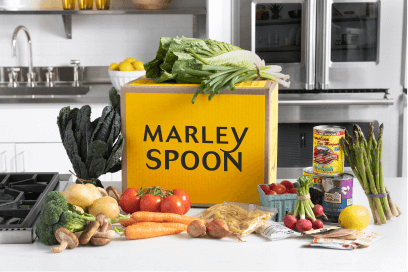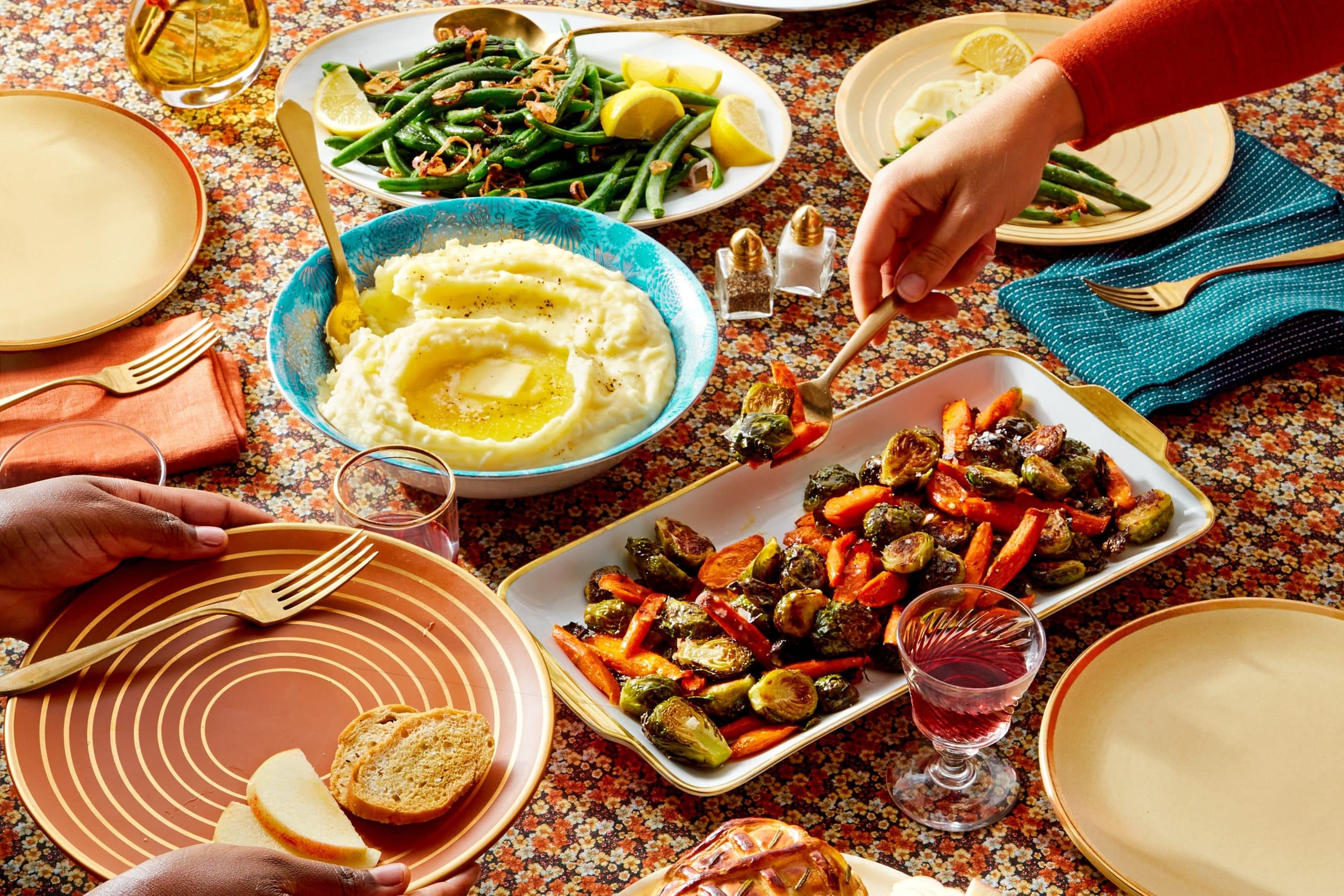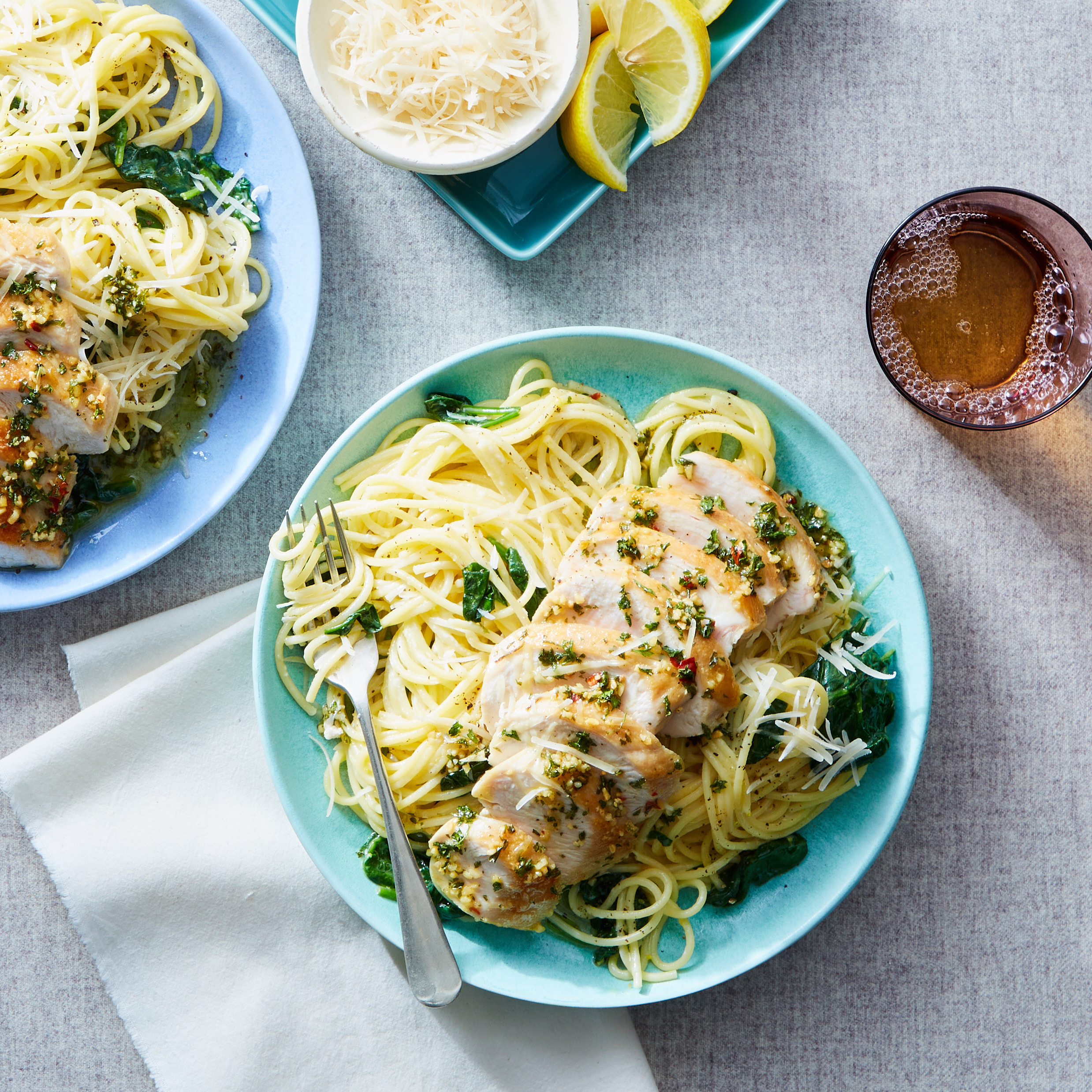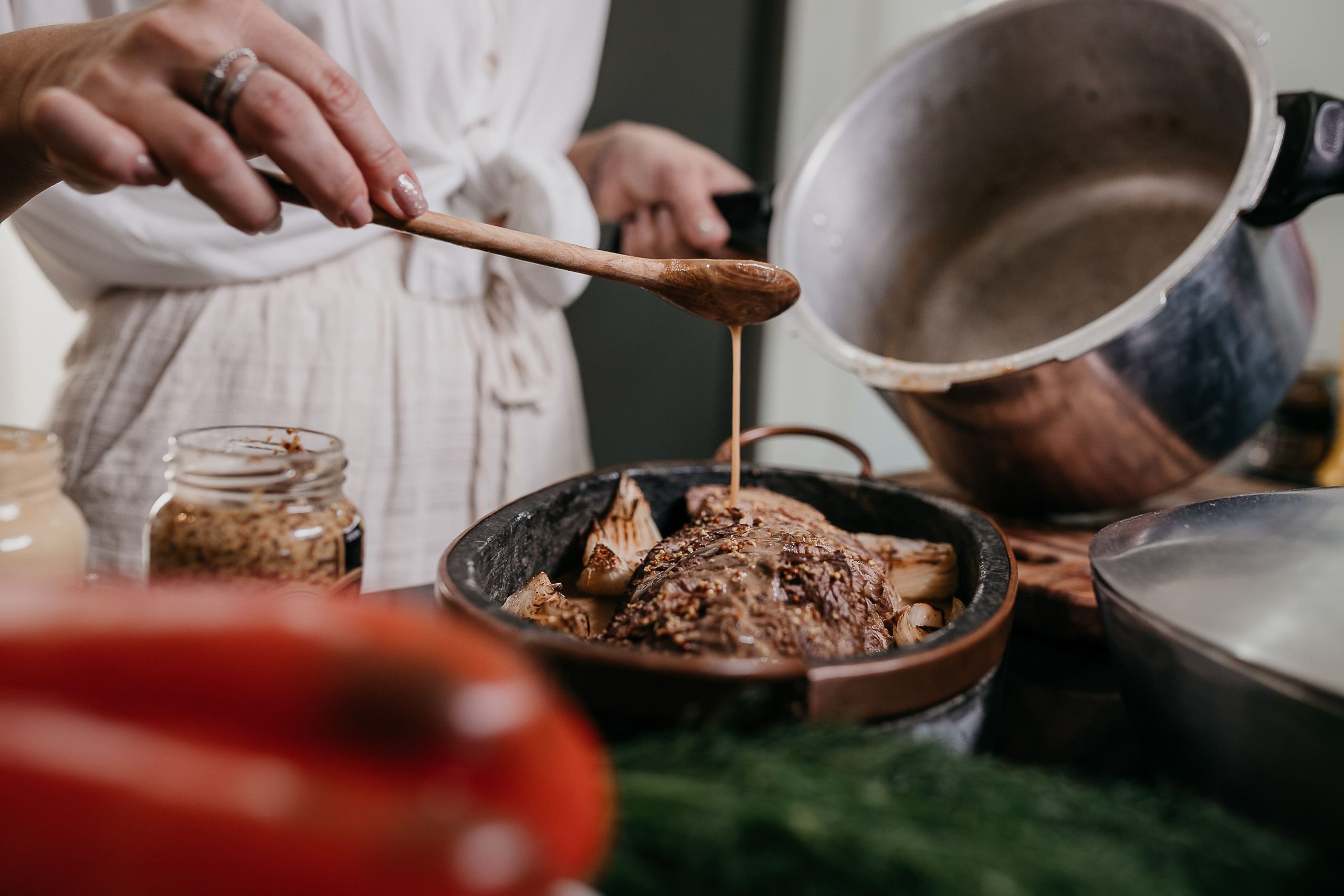Along the way, she realized she’d stopped caring for herself. In her own words, “I was exhausted, I was hungry. I didn’t know what to paint—I’d lost any sense of a ‘message’ inside me long ago.” She moved back to the West Coast where her husband lived, stopped painting, and for the first time, started cooking. What follows is a familiar narrative—healing through eating home-cooked meals, learning to take care of one’s body and mind with the simple act of cooking, and eventually,returning to art. She closes the cookbook by saying, “When all is said and drawn and written down in permanent ink, I feel at home in my body, having found a balance between doing and being.”
But there’s something truly unique in how Sara Zin writes this story in her exquisite illustrated cookbook, The Starving Artist Cookbook. From the first sentence, she invites the reader into her private world, with a voice so humble and candid you can’t help but feel she’s confiding in you. She begins, “The truth is that I’ve never really known what to do with my life.” Haven’t we all been there, whether for a brief moment or for months, even if we don’t dare say those words aloud? Her words are a pleasure to read for their honesty and clarity, and even in the most personal details about her breakdown before she left New York—“I wandered around the city and passed strangers…a cold sweat formed underneath all my layers of clothes, my toes numb from walking, my belly grumbling”—her writing never feels overwrought. For the first time in a while, I didn’t gloss over, I wanted to be there for every sentence. Because learning how Sara came to cooking and illustrating recipes is refreshing and moving. It reminds you of the hardships of being young and ambitious in a place like New York City, of juggling a job and your artwork. Of not having the time or energy to wash your hair, let alone be with your significant other. More importantly, it’s a guide to giving yourself permission to take a break, listen to your growling stomach, whether it be a hunger for sleep, a nourishing meal, or something entirely different.
The beauty of this cookbook is not just in its terrific storytelling, but also in its stunning illustrations. Sara Zin walks us through her culinary journey, from learning the basics such as stocking a pantry, to mastering more elaborate recipes such as her mother-in-law’s chocolate walnut cake. Each recipe is accompanied by a gorgeous watercolor. The unadorned aesthetic of her illustrations mirrors the recipes: there’s nothing intimidating or precious in the food being presented here. As you cook or read your way through, you begin to believe that if this is the kind of food that healed Sara—no green juices or grain bowls required—then it can certainly work for us, too. She makes cooking from scratch seem not only feasible, but pleasurable (homemade pasta and bread!). Of course there’s the suggestion that these recipes take time, but spend a few hours with her book, and you might just find yourself kneading Chalka dough over the weekend.
I was excited to speak with Sara and learn more about her book. It came as no surprise that she is just as lovely, wise, and humble in person as she is on the page.
Did you paint food before the Starving Artist project? Had you ever worked with watercolors?
No, I never painted food and I used mostly oil paint. My whole adult life, when I wasn’t working, I was painting. And so when I left New York and switched to freelance and stopped painting, I had all this free time. What am I going to do? I asked myself. Cooking was one of those things I’ve always wanted to do, so I started there. But I’d never painted or drawn my food. When I started painting again, I chose watercolors. I hadn’t used watercolors since high school. It’s a more transportable medium, it’s like sketching because of how quick it is, and it didn’t have the weight and expectation of oils. Watercolor was like a bridge, it was meditative and fun. At the beginning it was a challenge to relearn the medium and how I wanted to paint. I painted like I would with oils, meaning my paintings were dense. It almost looks like gouache. I layer my watercolors, which is counter-intuitive in this medium, but it allowed me to reinterpret the medium and make it my own.
Have you gone back to oils since then?
I have. The pressure is off for oils and I’m able to go back to that medium and have fun. It doesn’t have the expectation of needing to be successful, and now I can simply enjoy it.
Where does your inspiration for recipes come from?
I think photos are very inspiring. There’s the immediacy of wanting, of looking at the image and thinking, “I would know how to make that.” Also memories. Sometimes I’ll be in a certain mood and remember a taste from my childhood. In that moment there was some kind of personal transformation taking place with the food, but I was so involved with living my life that I wasn’t able to process that shift. Now, by recreating a recipe from a memory, I can go back and process the memory at a later date. And wanting to recreate a specific food memory is a motivating force.
Do you have any recent food obsessions?
Lately I’ve been obsessed with toasted sesame oil. I mix it in with sherry vinegar for a salad dressing. Or add it to fried rice. I love its smell and that it’s so rich and versatile.
Do you have any food rituals?
I think the most important one for me is cleaning the kitchen. It really calms me down to clean before I get started. And listening to music helps, too. It’s not that cooking is a scary thing, but sometimes in my head it can be. The biggest realization for me was that I can’t just wing it. I need to be conscious of the meal I’m going to cook and give myself enough time. It’s important for me to create time in order to cook a meal, to not feel rushed.
Is there a recipe that was particularly difficult or complicated to make for this cookbook?
Yes, the walnut chocolate cake! It’s my mother-in-law Basa’s cake. It’s so specific and weird. You have to shave the walnuts, not grind them, and so you need to use a rotary cheese grater. The walnut is used in place of flour, so it really does need to be moist and act as a binder, that’s a huge component of the recipe. Basa visited and showed me how to make the cake. As she cooked, I took a lot of notes so I’d remember every detail. She’s been perfecting this recipe for 30 years, so it was quite stressful!
Have you ever tried to use a food processor for the walnuts?
Uhm, no. I asked her and she said, “That’s not going to work.” Now I’m too indoctrinated by her way of doing it and I’d never diverge.
What did you learn in writing this cookbook?
I learned to slow down while I was cooking. With a book, you’re responsible for everything you write and describe. There’s a concern for the other side, you want this other person, who’s a stranger, to enjoy the recipes. I had to learn to step aside from my own personal desires and be as clear and precise as I could be. I needed to make sure someone else could actually read it and understand. With a blog post it’s different, you can always add clarifications in the comments or edit the post at a later date.
Do you have any shortcuts or tips or tricks you recommend for weeknight cooking?
I always find that prepping is very time consuming. Whenever I have a moment to spare, I try to chop everything I know I’ll use within the next few days. Within reason, of course, I’m not going to chop half of an onion in advance because I want the food I cook to be fresh. I try to cook in tune with seasons, which helps me work with fresh and flavorful ingredients. There are a few ingredients I love for creating a quick meal, like eggs. They’re my default: eggs over a salad, eggs over rice. And then I’ve learned the little ingredients I always need on hand to create my favorite easy meal (eggs!). It’s helpful to be aware of the preparation that goes into a meal, because if you don’t already have the ingredients in your kitchen, then you have to shop, and that takes time. I try to be stocked in the ingredients I know I’m always going to cook with. If I’m planning ahead, I make a soup or casserole on Sunday. Quiches are especially wonderful. I have my breakfast, lunch, or dinner with a quiche, and then I don’t have to worry about anything.
Sara Zin has been so kind as to share two recipes from her cookbook—Asparagus & Egg, one of her favorite easy and quick weeknight meals, and Basia’s famous Chocolate Walnut Cake.

Asparagus & Eggs
Serves: 1
Ingredients:
handful of asparagus
1 Tbsp olive oil (15 ml)
coarse salt and pepper
1 tsp butter (5 grams)
1 egg
1 lemon wedge
Directions:
- Clean the asparagus and cut off the bottom 1–2 inches of the stem (which can be hard and stringy).
- Heat a large pan with 1 tablespoon olive oil over medium heat and add the asparagus. Season with salt and pepper and toss so each side is cooked for 3 minutes.
- In a separate small pan, heat 1 teaspoon butter over medium heat and crack one egg, being careful not to break the yolk. Cover with a lid and reduce the heat to low. Cook for 3–5 minutes to desired runny-ness.
- Plate the asparagus, squeeze a bit of lemon over and carefully place the egg on top. Season with salt and pepper and serve hot.

Basia’s Chocolate Walnut Cake
Serves: 8
Ingredients:
For the Cake:
2 cups fresh or frozen cherries (500 grams)
2 cups vodka, small jar (480 ml)
2 cups walnuts (400 grams)
4 Tbsp breadcrumbs (60 grams)
8 eggs
1 large lemon
1 cup powdered sugar (128 grams)
1 Tbsp vanilla extract (15 ml)
1 Tbsp butter (14 grams)
cake pan with removable bottom
For the Filling:
½ cup unsalted butter (113 grams)
2 eggs
6–7 Tbsp powdered sugar (72-84 grams)
7 Tbsp unsweetened cocoa (84 grams)
2 Tbsp milk (30 ml)
fresh raspberries
Directions:
For the Cake:
- The night before, place fresh or frozen cherries in a small jar and cover with what else, it’s a Polish recipe—vodka.
- Preheat the oven to 350º F / 180º C.
- Finely shave the walnuts using a rotary cheese grater into a large bowl. Add 4 tbsp breadcrumbs to the walnuts and stir.
In two large bowls, separate the egg whites from the egg yolks. Grate the lemon and squeeze the juice of half a lemon into a cup. Add the powdered sugar to the egg yolks, and whisk using an electric mixer. Then add the lemon zest, lemon juice and vanilla, and mix well. - Beat the egg whites using an electric mixer until stiff peaks form. Slowly and gently add the egg whites to the walnut mixture. (Make sure you don’t transfer over any of the excess water from the egg whites). Add the egg yolk mixture, using a spoon to gently stir until well combined.
- Generously butter the cake form, then add a spoonful or two of breadcrumbs and swish around so the entire pan is coated. (This will allow the cake to come out of the form smoothly). Pour the batter into the cake form and bake for 30–35 minutes. Then turn off the heat, crack the oven door and let it cool on the rack for 30 minutes.
For the chocolate filling and topping:
-
Remove the sides of the cake pan and let the cake cool completely. Carefully slice the cake in half horizontally, so you have two layers.
-
Melt the butter in a small saucepan and let it cool to room temperature.
-
In a large bowl, mix the eggs, powdered sugar, unsweetened cocoa, and milk using an electric mixer. Slowly add the butter to the cocoa mixture, noting the consistency (smooth) and color (rich chocolaty brown). Be sure to taste frequently because you may not need to add all the butter.
-
To assemble, place one layer of the cake (with the cut side up) and spoon the chocolate on top. Drain the vodka soaked cherries and add a layer on top of the chocolate. Add more chocolate so that you have a good sized layer. Cover with the other layer of the cake (with the cut side down). Using a knife, cover the top and sides with chocolate to get a smooth surface.
-
Refrigerate for 2–4 hours. Add some powdered sugar and fresh raspberries on top and serve with coffee.
Thank you, Sara Zin, for sharing your thoughts and these delicious recipes!
Illustrations by Sara Zin, photo by Mulberry Tree Design Studio





